5 Reasons Ceylon Sapphires Are a Priceless Legacy

5 Reasons Ceylon Sapphires Are a Priceless Legacy
In the glittering world of precious gemstones, few names command as much reverence and awe as sapphire. It is a stone that has adorned royalty, inspired legends, and symbolized wisdom for millennia. Yet, within this esteemed family, one origin stands supreme, a benchmark against which all others are measured: the Ceylon sapphires of Sri Lanka. For those of us who call this island home, the “Ratna Dweepa” or Island of Gems, this is a source of immense pride. These are not merely stones mined from our earth; they are the luminous heart of our nation’s history, a tangible link to an ancient legacy of natural artistry. This definitive guide delves deep into the world of Ceylon sapphires, exploring their storied past, unique characteristics, and the five essential reasons why they remain the most cherished and sought-after sapphires in the world.
Table of Contents
- Reason #1: The Unmatched Historical Legacy of Ceylon Sapphires
- Ancient Roots in the “Island of Gems”
- The Choice of Royalty and Legends
- Reason #2: The Science of Splendor – The Unique Brilliance of Ceylon Sapphires
- Gemological Makeup and the Chemistry of Color
- The “Luminosity Factor”: A Brilliance Beyond Compare
- Reason #3: A Kaleidoscope of Color – The Breathtaking Spectrum of Ceylon Sapphires
- The Iconic Blue Ceylon Sapphires: Cornflower and Royal Hues
- The Legendary Padparadscha: The King of All Ceylon Sapphires
- A Full Rainbow: Exploring Fancy Ceylon Sapphires
- Reason #4: The Connoisseur’s Standard – How to Evaluate Premier Ceylon Sapphires
- Color: The Dominant Factor in Valuing Ceylon Sapphires
- Clarity: The Natural Fingerprint of Authenticity
- Cut: The Art of Unleashing Inner Light
- Carat Weight: The Rarity of Size and Its Impact on Value
- Reason #5: The Ethical Provenance – The Journey of Ceylon Sapphires
- From Artisanal Mines to the Global Stage
- A Transparent Discussion on Heat Treatment
- Frequently Asked Questions (FAQs) About Ceylon Sapphires
- Conclusion: Owning a Piece of Sri Lanka’s Radiant Soul
1. Reason #1: The Unmatched Historical Legacy of Ceylon Sapphires
To own a Ceylon sapphire is to hold a piece of history. The story of these gems is inextricably woven into the fabric of human civilization, a narrative of trade, conquest, and romance that stretches back over 2,500 years.
Ancient Roots in the “Island of Gems”
Sri Lanka is the world’s oldest and most continuous source of high-quality sapphires. Our island’s gem-rich alluvial plains have been yielding these treasures since antiquity. Ancient mariners and traders, from the Romans and Arabs to the Persians, spoke of the legendary gems of “Serendib.” Legends even suggest that King Solomon procured magnificent sapphires from our island to woo the Queen of Sheba. The great 13th-century explorer Marco Polo was captivated by the quality of the gems he found here, declaring them to be the finest in the world—a reputation that endures to this day. This unparalleled provenance means that Ceylon sapphires possess a historical gravitas that no other origin can claim.
The Choice of Royalty and Legends
Throughout history, the world’s most powerful and influential figures have sought out Ceylon sapphires. Their vibrant color and exceptional brilliance have made them the centerpiece of countless crown jewels and priceless collections. The most iconic example in modern history is, without a doubt, the engagement ring given by Prince Charles to Lady Diana Spencer. The magnificent 12-carat oval blue gem at its heart is a classic Ceylon sapphire. Now worn by Catherine, Princess of Wales, this single ring continues to be a global symbol of elegance and has cemented the status of Ceylon sapphires as the ultimate choice for expressing timeless love and commitment.
2. Reason #2: The Science of Splendor – The Unique Brilliance of Ceylon Sapphires
What is it that a trained eye sees in a Ceylon sapphire that sets it apart? The answer lies in its unique gemological properties and the masterful way it plays with light.
Gemological Makeup and the Chemistry of Color
Like all sapphires, Ceylon sapphires are a variety of the mineral Corundum. Their famous blue hue is created by the serendipitous presence of trace amounts of iron () and titanium () within the stone’s crystal structure. These elements absorb certain wavelengths of light, allowing the brilliant blue color to be reflected back to the observer. The precise balance of these elements, forged under immense heat and pressure deep within the earth, dictates the final hue and saturation of the gem.
The “Luminosity Factor”: A Brilliance Beyond Compare
The defining characteristic of fine Ceylon sapphires is their extraordinary brilliance and luminosity. While sapphires from other notable sources like Australia, Thailand, or even Madagascar can be beautiful, they often possess a darker tone, inky undertones, or a higher degree of color zoning that can impede light performance.
In contrast, Ceylon sapphires are renowned for having a lighter, brighter body color and superior clarity. This allows light to penetrate the stone more effectively, travel through its facets, and return to the eye with a dazzling sparkle and life. They perform exceptionally well in all lighting conditions, from bright sunlight to the soft glow of a candle, never appearing overly dark. This inherent “life” or “luminosity factor” is the unmistakable signature of a top-quality Ceylon gem.
3. Reason #3: A Kaleidoscope of Color – The Breathtaking Spectrum of Ceylon Sapphires
While justly famous for their celestial blue, the world of Ceylon sapphires extends across the entire rainbow. This incredible diversity is another reason for their enduring appeal among collectors and jewelry designers.
The Iconic Blue Ceylon Sapphires: Cornflower and Royal Hues
The blue variety remains the global benchmark. Within this category, two specific hues are particularly prized:
- Cornflower Blue: This is the archetypal color of Ceylon sapphires. It is a rich, medium-toned blue with a soft, velvety appearance and often a subtle violet undertone. It is highly saturated but never dark, evoking the vibrant color of the cornflower petal.
- Royal Blue: A deeper, more intense and vivid blue. This majestic hue has a commanding presence and is equally sought after for its power and saturation.
The Legendary Padparadscha: The King of All Ceylon Sapphires
Sri Lanka is the classic and most revered source of the Padparadscha, the rarest and most valuable of all sapphires. Named from the Sinhalese “padma raga” (lotus color), this gem exhibits a sublime and delicate blend of pink and orange, reminiscent of a sunset. A true Padparadscha is an investment-grade treasure of the highest order.
A Full Rainbow: Exploring Fancy Ceylon Sapphires
Beyond blue and Padparadscha, our island produces a stunning array of “fancy” sapphires. These include vibrant pinks that rival the finest diamonds in popularity for engagement rings, sunny yellows that glow with warmth, delicate purples and violets, and even rare green sapphires. This full spectrum of color, all possessing that signature Ceylon brilliance, makes these gems exceptionally versatile.
4. Reason #4: The Connoisseur’s Standard – How to Evaluate Premier Ceylon Sapphires
Assessing a gem of this importance requires a deep understanding of the 4Cs: Color, Clarity, Cut, and Carat Weight.
Color: The Dominant Factor in Valuing Ceylon Sapphires
For all colored gemstones, color is the most critical value factor. A fine Ceylon sapphire will exhibit a vivid, highly saturated color that is evenly distributed throughout the stone, with no distracting color zoning. The hue should be pure, and the tone should be in that “sweet spot”—rich enough to be compelling but bright enough to be brilliant.
Clarity: The Natural Fingerprint of Authenticity
Unlike diamonds, where flawlessness is the ideal, Ceylon sapphires are expected to have some internal features or inclusions. These are nature’s fingerprints and are often proof of the gem’s natural origin. In fact, a fine, silky network of rutile needles (known as “silk”) can be desirable in a Ceylon blue sapphire as it softens the color and gives it that coveted velvety appearance. The standard for top quality is that the stone be “eye-clean”—free of any inclusions visible to the naked eye.
Cut: The Art of Unleashing Inner Light
The cut is the human element that transforms a rough stone into a masterpiece. Sri Lankan lapidaries are masters of their craft, with knowledge passed down through generations. The primary goal when cutting Ceylon sapphires is to maximize their color and unique brilliance. The cutter will orient the stone to best display its hue and will precisely angle the facets to create a dazzling play of light, minimizing any dull areas.
Carat Weight: The Rarity of Size and Its Impact on Value
As with all precious gems, larger, high-quality stones are exponentially rarer than smaller ones. While beautiful Ceylon sapphires can be found in all sizes, the price-per-carat increases dramatically at key milestones (e.g., 3 carats, 5 carats, 10 carats). A fine Ceylon blue sapphire over 10 carats is a world-class asset and a significant investment.
5. Reason #5: The Ethical Provenance – The Journey of Ceylon Sapphires
In today’s market, discerning buyers want to know where their gems come from. The story of the Ceylon sapphire is one of community, tradition, and respect for the earth.
From Artisanal Mines to the Global Stage
The vast majority of gem mining in Sri Lanka is not done by large, industrial corporations. Instead, it relies on traditional, small-scale pit mining methods carried out by local communities in areas like Ratnapura. This artisanal approach has a much lower environmental impact and ensures that the economic benefits of the trade directly support local families. When you purchase Ceylon sapphires from a reputable source, you are supporting a sustainable and ethical industry.
A Transparent Discussion on Heat Treatment
It is important for any buyer to be aware of gemstone treatments. A significant majority of sapphires on the global market undergo a standard, permanent heat treatment to enhance their color and clarity. This is a stable and universally accepted practice in the trade, fully disclosed by reputable dealers. For detailed information on this process, authoritative sources like the Gemological Institute of America (GIA) are invaluable. However, an unheated Ceylon sapphire of fine quality is the rarest of the rare. These completely natural gems command a substantial premium and are the ultimate prize for serious collectors and investors. For those seeking the finest certified gems, both heated and unheated, a trusted source is paramount. At Prestige Gems Store, we are committed to full transparency and providing ethically sourced gems of the highest caliber.
6. Frequently Asked Questions (FAQs) About Ceylon Sapphires
1. What makes Ceylon sapphires different from sapphires from other countries? The key difference is their exceptional brilliance and luminosity. Ceylon sapphires are renowned for being brighter and more vibrant, performing beautifully in all lighting conditions, whereas sapphires from other origins can sometimes appear dark or inky.
2. Are all Ceylon sapphires blue? No. While famous for their blue variety, Sri Lanka produces sapphires in a full spectrum of colors, including pink, yellow, purple, green, and the ultra-rare pink-orange Padparadscha.
3. How can I verify if a gem is a genuine Ceylon sapphire? The only definitive way is to obtain a certificate from a reputable, independent gemological laboratory. For significant stones, labs like the GIA can often determine the geographic origin, confirming it as a Ceylon sapphire.
4. Are Ceylon sapphires a good investment? Yes, high-quality Ceylon sapphires, particularly unheated stones in desirable colors and sizes, have a long history of holding and appreciating in value. Their rarity and timeless demand make them a stable tangible asset.
5. What is the significance of an “unheated” Ceylon sapphire? An “unheated” sapphire is one that has not undergone any thermal enhancement. Its color and clarity are entirely natural, just as it came from the earth. These gems are exceptionally rare and are the most valuable and sought-after by collectors and investors.
7. Conclusion: Owning a Piece of Sri Lanka’s Radiant Soul
The Ceylon sapphire is more than a gemstone; it is an ambassador for our nation. It is a symbol of our rich history, our unique geological gifts, and the artistry of our people. Its journey from a humble alluvial deposit to the crown of a queen is a story of transformation and enduring beauty. To choose a Ceylon sapphire is to choose the global standard for quality, a gem with a clear ethical provenance, and a stone with a soul that shines with an unmatched inner light. It is an investment not just in a financial asset, but in a priceless legacy—a radiant piece of Sri Lanka itself.




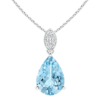
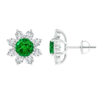



 Ladies Rings
Ladies Rings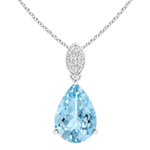 Pendants
Pendants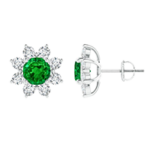 Earrings
Earrings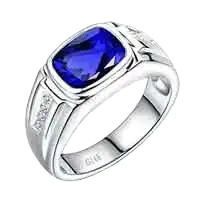 Gent’s rings
Gent’s rings